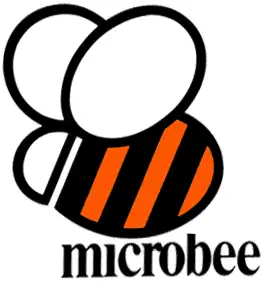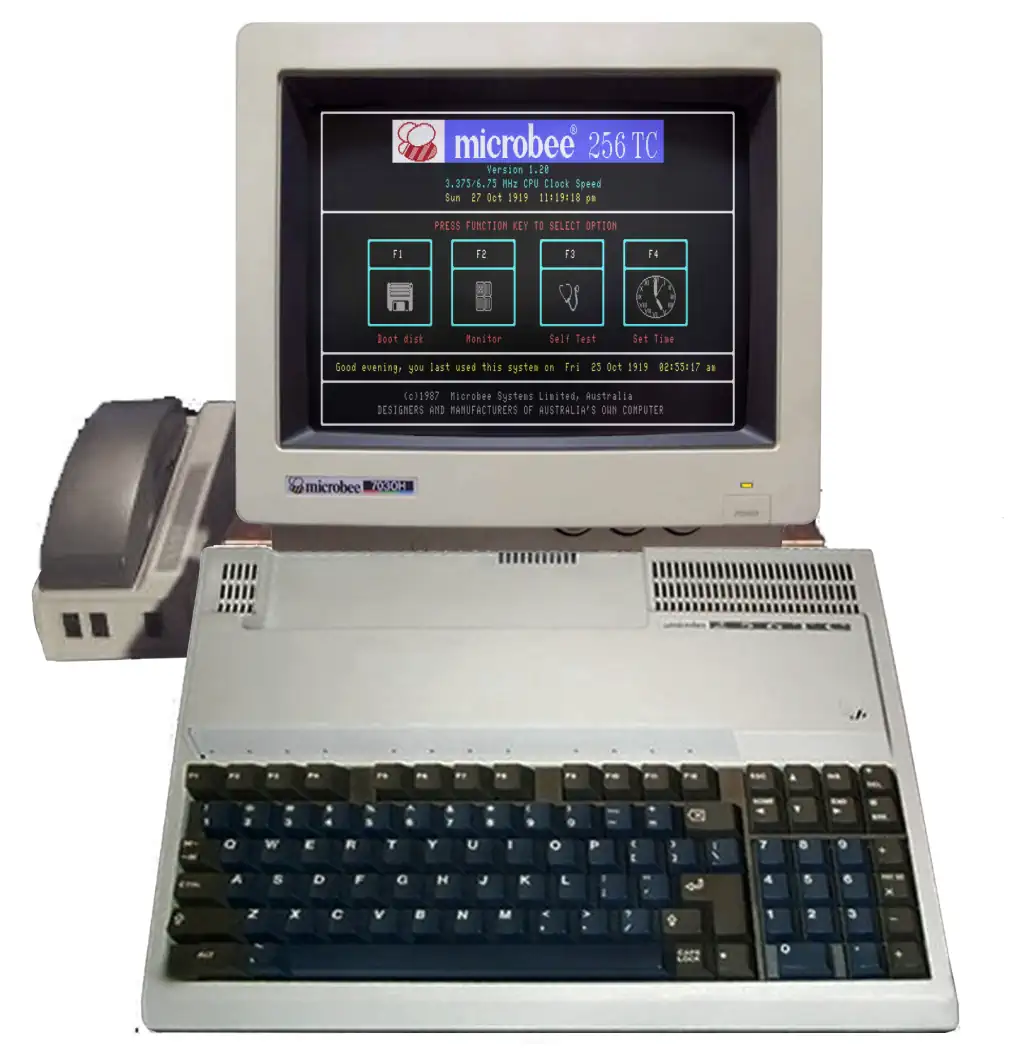MicroBee Home Computers
This was the final version of the MicroBee computer, it was the culmination if five years of MicroBee development. The best features of the previous designs have been incorporated onto a single, four layer printed circuit board. It was launched in 1987 and featured an expanded memory of 256kByte. The keyboard was upgraded to include a numeric keypad and the computer contained a 3.5" Floppy Disk Drive that supported both a 400kByte Single Sided Double Density and a 800kByte Double Sided Double Density format.
The computer came bundled with a videotex terminal program called Videotex, a word processor "Simply Write" and a serial terminal emulator program called "Telcom".
The 256 TC came with a faster CPU, the Z80 now clocked in at 3.75MHz and new VDU modes:
- Memory Mapped 2k Screen RAM
- 2k Colour RAM 2k Attribute RAM
- 4k Dual Font ROM Formats
- 40x24 for Videotex
- 64x16 for Basic 80x24 for CP/M.
- Flashing (character ON/OFF)
- Inverse attribute bit 6 (LA14) (does not need PCG).
- 16k Programmable Character Generator or 131,072 pixels.

Zilog Z80 CPU Family
The Z80 quickly became popular in the personal computer market, with many early personal computers, such as the TRS-80 and Sinclair ZX80, using the Z80 as their central processing unit (CPU). It was also widely used in home computers, such as the MSX range, SORD, and the Amstrad CPC, as well as in many arcade games. Additionally, it was also used in other applications such as industrial control systems, and embedded systems. The Z80 was widely used until the mid-1980s, when it was gradually replaced by newer microprocessors such as the Intel 80286 and the Motorola 68000.
The Z80 microprocessor was developed by Zilog, a company founded by Federico Faggin in 1974. The Z80 was released in July 1976, as a successor to the Intel 8080. It was designed to be fully compatible with the 8080, but also included new features such as an improved instruction set, more powerful interrupts, and a more sophisticated memory management system.
The Z80 quickly became popular in the personal computer market, with many early personal computers, such as the TRS-80 and Sinclair ZX80, using the Z80 as their central processing unit (CPU). It was also widely used in home computers, such as the MSX range, SORD, and the Amstrad CPC, as well as in many arcade games. Additionally, it was also used in other applications such as industrial control systems, and embedded systems. The Z80 was widely used until the mid-1980s, when it was gradually replaced by newer microprocessors such as the Intel 80286 and the Motorola 68000. The design was licensed to Synertek and Mostek as well as the European SGS.
The Z80s instruction set is binary compatible with the Intel 8080, so that 8080 code such as the CP/M Operating System and Intel's PL/M compiler for the 8080 can run unmodified on the Z80. The Z80 had many enhancements over the 8080 such as 16-bit data movement instructions, block copy and block I/O instructions, single bit addressing of all registers, IX/IY offset registers, better interrupt system and a complete duplicate register file for context switching during an interrupt.
Source: WikiPedia

ROM: 16kB
VRAM: 32kB
3.5" FDDD for 800kB and 400kB discs. Sound Chip none Sound Mono sound, 2 octaves Display Chip MW6545 User Programmable VDU Display 512x512 Best Text 80x24 Best Graphics 512x512 Sprites none System OS CP/M, BASIC Storage Networked

